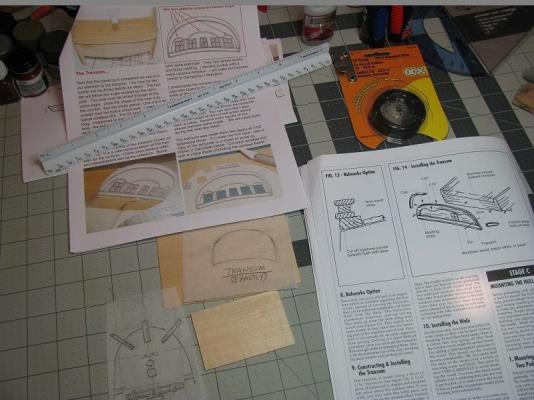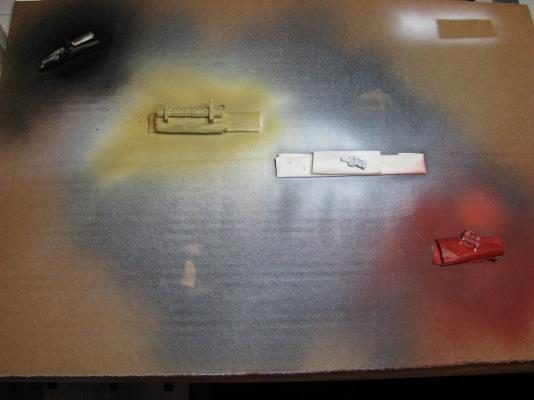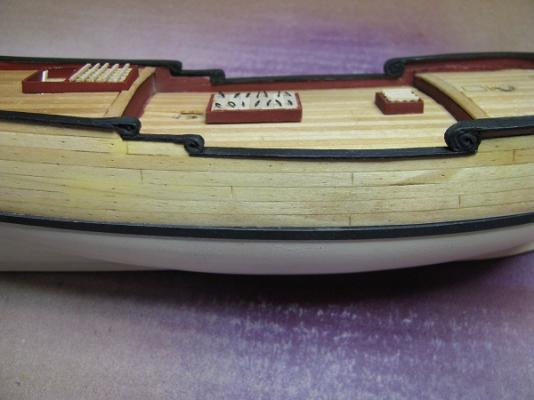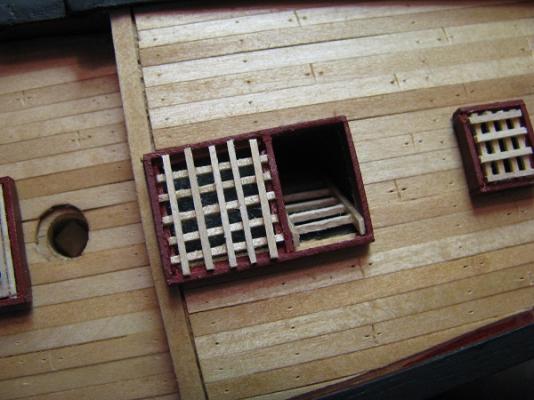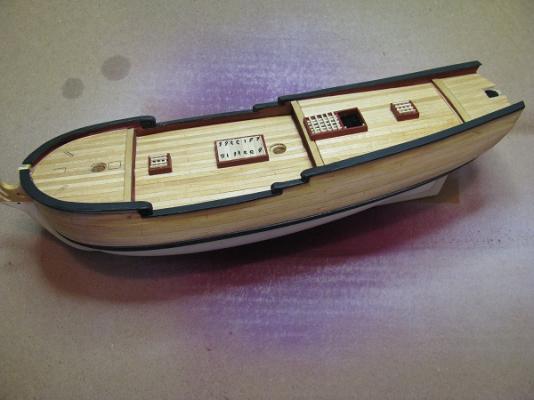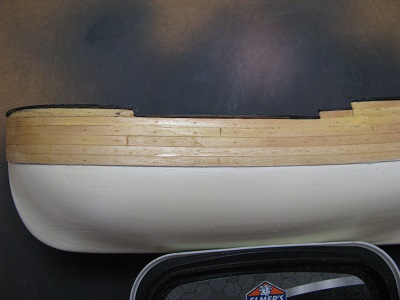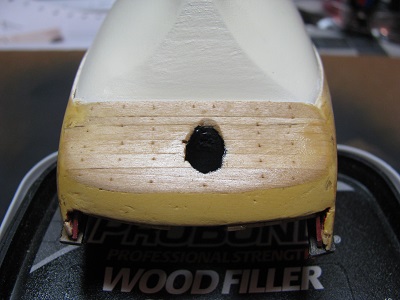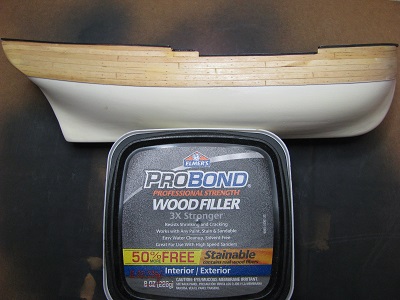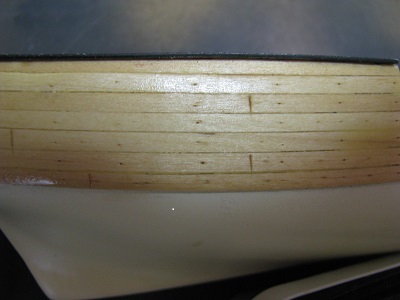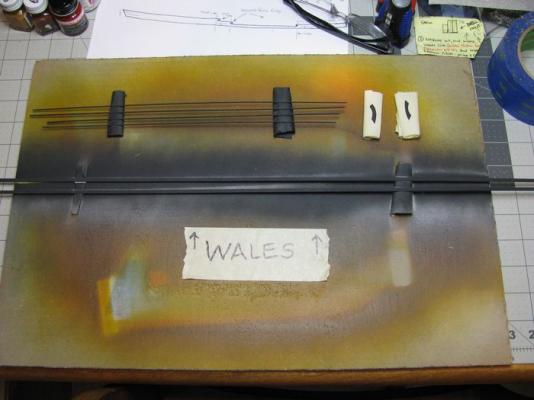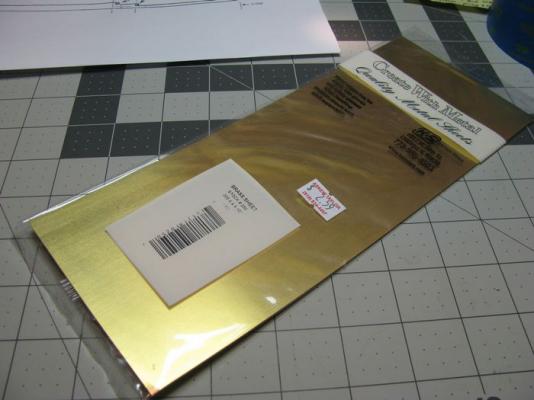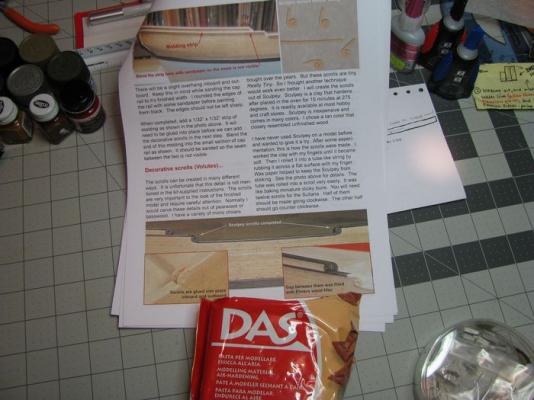-
Posts
35 -
Joined
-
Last visited
Content Type
Profiles
Forums
Gallery
Events
Everything posted by Bob the Builder
-
I appreciate your careful, methodical approach, Charlie -- there's no reason you will come up with nothing less than a jewel of a model. Watching your build is like an instructional segment, with the way you present your progress, and show the tools, templates, and materials used. I have something to learn from you.
-
Chuck - I may end up doing that, but first I think I will try Alan's advice on building my own (I have tons of extra lumber), I was hoping not to spend any more on extras for this build.
- 44 replies
-
- Sultana
- Model Shipways
-
(and 2 more)
Tagged with:
-
I got on a scratch-building kick, before opening the kit bags. I'm gonna go back and use the cast gratings supplied with the kit. I think I can detail-paint to make those appear to be wood.
- 44 replies
-
- Sultana
- Model Shipways
-
(and 2 more)
Tagged with:
-
I wasn't really sure how to make gratings without those notched pieces that I saw in the practicum that were purchased separately. Maybe I should slice some openings in each piece of wood, and push them together so everything finishes on one plane?
- 44 replies
-
- Sultana
- Model Shipways
-
(and 2 more)
Tagged with:
-
From posting these pictures right after a day's work, I've learned that maybe I should make some pictures, and then study them to see what details can be finished in a better way before I post them for all to see. It gives an honest perspective that I don't have staring at the project all day on my bench...
- 44 replies
-
- Sultana
- Model Shipways
-
(and 2 more)
Tagged with:
-
The transom is next - I've added height to the overall shape as Mr Passaro outlines in the practicum, and I too, will give depth and dimension by stacking two 1/32 sheets together (the first layer will hold the window detail, the outer layer will show architectural details...
- 44 replies
-
- Sultana
- Model Shipways
-
(and 2 more)
Tagged with:
-
I'm doing a combination hand-building some things, and using some of the cast-metal items supplies with the kit, such as the windlass, binnacle, galley stack, and figurehead. The windlass will be improved upon with hand mixing and painting for the impression of Oak, then weathered a bit...
- 44 replies
-
- Sultana
- Model Shipways
-
(and 2 more)
Tagged with:
-
Made the volutes from rolled up air-dry clay, and blended in to the cap rails. Looks like some more sanding shaping is in order.
- 44 replies
-
- Sultana
- Model Shipways
-
(and 2 more)
Tagged with:
-
I just noticed , the camera tells me what I need to tidy up!
- 44 replies
-
- Sultana
- Model Shipways
-
(and 2 more)
Tagged with:
-
- 44 replies
-
- Sultana
- Model Shipways
-
(and 2 more)
Tagged with:
-
- 44 replies
-
- Sultana
- Model Shipways
-
(and 2 more)
Tagged with:
-
That's the kind of advice that will help me learn, Chuck! Now that you point it out, it seems obvious the planks should appear to be fastened where they begin and end-- that's just good logic, and I missed it....but it will be fixed tonight. Also, I was able to right-click on the diagram and save it so I can print it out and put it on my cork-board as a reminder. Great help -Thanks for taking your time to help me be better!
- 44 replies
-
- Sultana
- Model Shipways
-
(and 2 more)
Tagged with:
-
- 44 replies
-
- Sultana
- Model Shipways
-
(and 2 more)
Tagged with:
-
Chuck, I can take more pics of the side planking so you can see my trunnel work and butt-ends, but I have to find another photo resizing program -- my trusty program vanished with my last updates! As for the deck planking, I fully intended to add trunnels and butt-ends there too after a final sanding, was just waiting for the stain to dry. Now you've got me re-thinking about the butt-ends up on deck. (I really like the look, but if it's not accurate...?) I knew I would have to make some compromises when I committed to ship-building with historic accuracy. In plastic, we say "It's your model, make it like you want it", but this (to me) is different.
- 44 replies
-
- Sultana
- Model Shipways
-
(and 2 more)
Tagged with:
-
To describe the Tamiya Dull Red that I used for the inside of the bulwarks is like mixing 85% bright red and 15% rust, again for a slightly weathered look... it's been difficult to see the exact red that other folks have used, since camera settings and lighting affect they way the color is represented in pictures.
- 44 replies
-
- Sultana
- Model Shipways
-
(and 2 more)
Tagged with:
-
I know the Vallejo paints are stocked at Squadron Hobby in Texas, but I've never used them. I've heard a lot of good things though...
- 44 replies
-
- Sultana
- Model Shipways
-
(and 2 more)
Tagged with:
-
Tamiya paints are the best I've ever ever used - I pick up these up locally at Raleigh Hobby, or they can be ordered and shipped anywhere in the continental U.S. from Tower Hobbies. The spray cans designated with the "TS" prefix are synthetic lacquers...they dry fast, and sand easily. I use these for 90% of my work. If you're using an airbrush, their bottle acrylic paints are designated with an "X" prefix for gloss colors, and "XF" for flat colors. If you find a gloss color that's perfect for your need, they also have a flat base you can mix in to make it as flat as you want. NOTE: Be sure to use an appropriate primer first though! I use Krylon spray primer w/ 10-minute dry time.
- 44 replies
-
- Sultana
- Model Shipways
-
(and 2 more)
Tagged with:
-
Using Chuck's advice once again, I painted the wales, trim, and fashion pieces off of the model for a neater job. From the plastic hobby, I've used Tamiya Lacquer paints for years, and after wood is properly primed, the paint works just fine here too. I used Tamiya Racing White for the hull color. It gives the schooner a slightly weathered look in my opinion. The insides of the bulwarks are Tamiya Dull Red (not sure if historically accurate, but it looks right to my eye)
- 44 replies
-
- Sultana
- Model Shipways
-
(and 2 more)
Tagged with:
-
I plan to make my rudder a fully functional piece, and using the technique from Chuck's practicum that I'm now so fond of, I'll make the gudgeons and pintles from a brass sheet I picked up last Friday. Not costly at all...and I'll have plenty of leftover (if I do it right the first time)
- 44 replies
-
- Sultana
- Model Shipways
-
(and 2 more)
Tagged with:
-
The volutes will be next (the curvy decorations where the cap rails break) Chuck made his from Sculpey, which has to be baked.... I will use DAS air-dry clay, which I have experience with. The only drawback to air-dry clay is that it shrinks a bit when dry, so I'll make them about 1/16" larger than needed, then sculpt them down to size if I need to -- glue-fix them in place, and paint-blend into the cap rails.
- 44 replies
-
- Sultana
- Model Shipways
-
(and 2 more)
Tagged with:
-
Made progress on the schooner this weekend - I planked and decked her with inspiration from Chuck Seiler and Chuck Passaro. I practiced my trunnel making on the side planks, and will do the same for the deck now that the stain has dried enough to fiddle with. I used Minwax Golden Oak for the color.
- 44 replies
-
- Sultana
- Model Shipways
-
(and 2 more)
Tagged with:
About us
Modelshipworld - Advancing Ship Modeling through Research
SSL Secured
Your security is important for us so this Website is SSL-Secured
NRG Mailing Address
Nautical Research Guild
237 South Lincoln Street
Westmont IL, 60559-1917
Model Ship World ® and the MSW logo are Registered Trademarks, and belong to the Nautical Research Guild (United States Patent and Trademark Office: No. 6,929,264 & No. 6,929,274, registered Dec. 20, 2022)
Helpful Links
About the NRG
If you enjoy building ship models that are historically accurate as well as beautiful, then The Nautical Research Guild (NRG) is just right for you.
The Guild is a non-profit educational organization whose mission is to “Advance Ship Modeling Through Research”. We provide support to our members in their efforts to raise the quality of their model ships.
The Nautical Research Guild has published our world-renowned quarterly magazine, The Nautical Research Journal, since 1955. The pages of the Journal are full of articles by accomplished ship modelers who show you how they create those exquisite details on their models, and by maritime historians who show you the correct details to build. The Journal is available in both print and digital editions. Go to the NRG web site (www.thenrg.org) to download a complimentary digital copy of the Journal. The NRG also publishes plan sets, books and compilations of back issues of the Journal and the former Ships in Scale and Model Ship Builder magazines.




